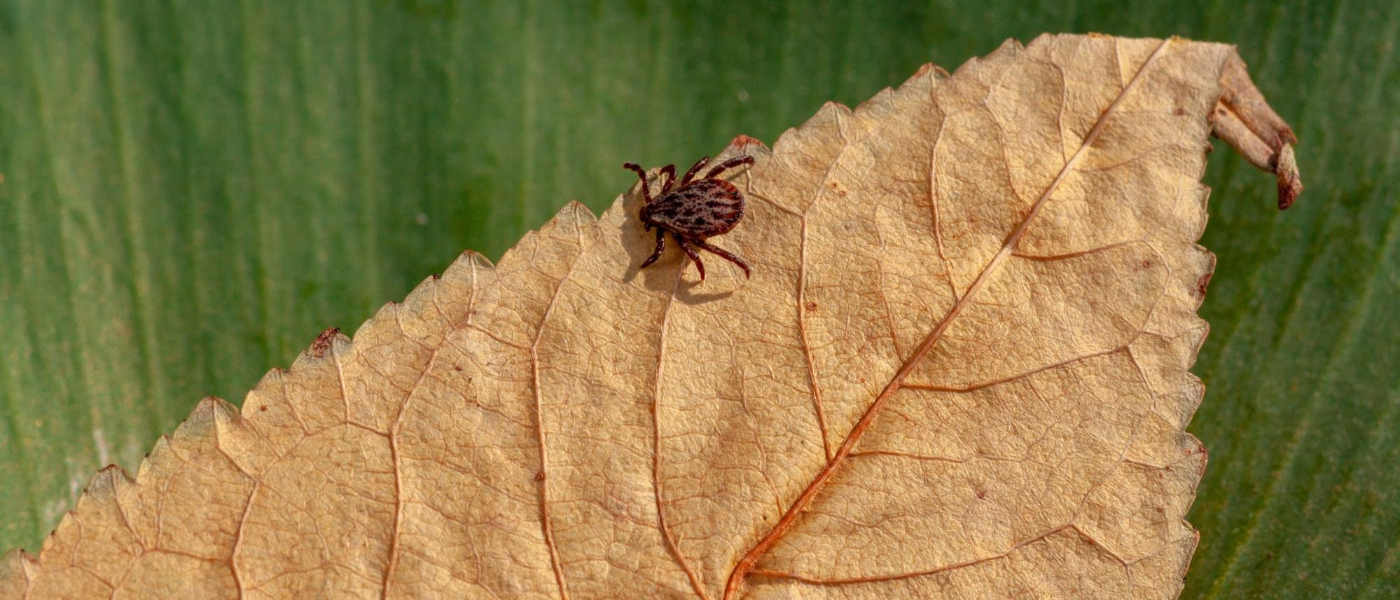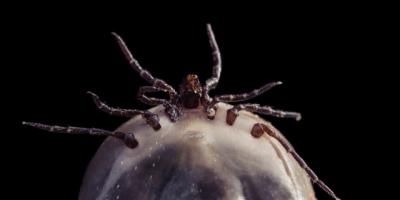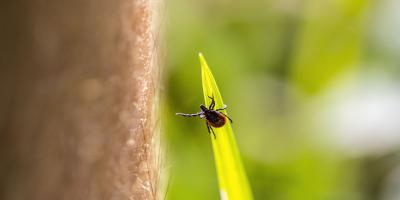Don’t 'Fall' for the Myth That Tick Season Is Over

As leaves start falling and summer showers turn to autumn breezes, you may think ticks go the way of sunscreen, beach blankets and lawn chairs. But unlike your pool gear and summertime playlist, ticks don’t disappear when the weather grows cold—they just get lazy.
Ticks are primarily active in temperatures above 35 degrees Fahrenheit. Even in New England, only three to four months of the year average below that threshold. That means ticks continue to be a threat through the start of football season, the day your little ghouls and goblins go out threatening tricks for treats, and sometimes even deep into holiday shopping and beyond.
And although ticks do go dormant during the deepest parts of winter, all it takes is a slight uptick in the weather and they’re back in business.
Out for Blood
Although they may look like insects, ticks are actually in the Arachnida (arachnid) class, along with mites, spiders and scorpions. They are parasitic pests that feed on the blood of animal hosts by latching onto and puncturing their skin. This is what makes them particularly adept at transmitting diseases, which is why they pose such a health risk for humans.
Throughout their lifecycle, ticks prey on a variety of creatures, which is how they spread infections such as Lyme disease so quickly and effectively. When they begin life in the larva phase—usually in the summertime—they chiefly attack small animals, such as rodents and birds. As ticks grow larger, so do their hosts.
By the time ticks reach the nymph stage come springtime -- although small animals still make up a large percentage of their diet -- ticks begin attaching to larger organisms; such as cats, dogs, deer and, given the chance, humans. By the time they’re full grown in autumn, and their bloodthirst at its peak, they feed primarily on larger animals... including people.
Not only have ticks’ appetites grown because they’ve matured in the fall, on a biological level they know the dry season is coming, and they want to get a few last big, juicy meals in before their food sources become scarcer. That’s why in certain parts of North America, October and November are actually ticks’ most active months of the year.
The Best Defense
The first line of defense against ticks is knowing and avoiding the places where they hang out. Grassy and heavily wooded regions are prime breeding grounds, so staying away from such areas can help minimize the risk of being bitten. And those piles of dry leaves just tempting you to cannonball into them? Think of them as apartment high-rises for ticks.
If you do venture into any high-risk zones, maybe while apple or pumpkin picking, wear long pants and tuck them into your socks. Long sleeves shirts with tight necks are a must, as is spraying with insect repellent. Anything that helps keep ticks out of direct contact with your skin will minimize the threat they pose.
When you get inside, be sure to throw your clothes into a hot dryer before washing them, preferably right when you get home. That will kill off any hitchhikers and protect the humans and animals in your house from any secondhand contact.
Finally, for the ultimate protection, licensed pest control professionals have access to products and techniques not available to the general public. Professional tick control treatments can reduce the tick population in your yard by up to 90%.
Want to knock down the tick population in your yard? Check out our tick control services, including our one-time tick treatment option to deter even the hungriest of arthropods.



